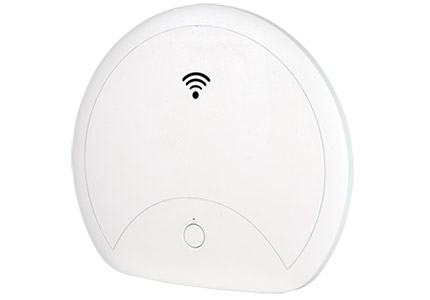This is an old revision of the document!
Table of Contents
Deploying the Student Information System on Intel Content Access Point (CMAL100)
This page documents how to install the SIS onto the Intel Content Access Point aka CMAL100 devices. The primary reason for installing the SIS on those mini school servers is to enable the school with poor to no Internet connectivity to have access to a Student Information System to improve their data management.

Flashing the CMAL100 Device
You only need to do this if you have been mistakenly given an non-rooted locked version of this device (e.g. for prisons). If you have a locked version flash your CMAL100 device first.
OpenSIS Installation
The Pacific Student Information System (FedSIS, MISIS) is based on opensis. So here we document how to install that.
First you need to ssh into the CMAL100 device. You either need to be on Linux, use Putty on Windows and even install Linux in Windows.
user@yourmachine:~$ ssh cap@ip.address.of.cmal100
ip.address.of.cmal100 will depend on your network. Are you connecting through the CMAL100 wireless interface? Are you connecting from the “outside” on your LAN? The easiest is to connect through the WiFi network of the CMAL. Then ip.address.of.cmal100 will likely be 192.168.1.1
Onced logged in make sure are in the use cap's home directory.
cap@CMAL-aaed:~$ cd /home/cap/
Download the latest OpenSIS into a zip file called opensis-[date and time of download].zip
cap@CMAL-aaed:~$ wget -c https://codeload.github.com/OS4ED/openSIS-Responsive-Design/zip/master -O opensis-$(date +% F_%R).zip
Before installing anything upgrade the system.
cap@CMAL-aaed:~$ sudo apt-get update cap@CMAL-aaed:~$ sudo apt-get upgrade
Install unzip on the device and decompress the file.
cap@CMAL-aaed:~$ sudo apt-get install unzip aptitude cap@CMAL-aaed:~$ unzip opensis-2020-04-22_05\:29.zip
Cope the decompressed files to the web servers directory and change the ownership.
cap@CMAL-aaed:~$ sudo cp -rf /home/cap/openSIS-Responsive-Design-master /var/www/misis.pss.edu.mh cap@CMAL-aaed:~$ sudo chown www-data:www-data -R /var/www/misis.pss.edu.mh
misis.pss.edu.mh as example for RMI deployment. In FSM you could call it fedsis.doe.fm
The is already likely an Nginx web server running on the device for some other web services. You could install the SIS on that same server or you could leave that Nginx mostly untouched and install Apache2 with which OpenSIS was more heavily tested. This is the approach shown here but an experience sysadmin could opt to use Nginx.
First, get Nginx to listen on port 81 instead of port 80. That way to access what was normally running on the device at http://my.content/ you would access it at http://my.content:81/. You do this by opening the file
cap@CMAL-aaed:~$ sudo nano /etc/nginx/sites-enabled/default
And as shown below find the number 80 and replace it with 81 (2 places). Do *NOT* change anything else or things will break. to save press Control-X (i.e. the Control key followed by the x key at the same time) following by Y and Enter to say yes and close the text editor.
You can then restart the Nginx web server.
cap@CMAL-aaed:~$ sudo service nginx restart
Install Apache2 and all other required software to run OpenSIS.
cap@CMAL-aaed:~$ sudo aptitude install apache2 libapache2-mod-php7.0 php7.0-common php7.0-cli php7.0-curl php7.0-fpm php7.0-gd php7.0-intl php7.0-json php7.0-mbstring php7.0-mysql php7.0-opcache php7.0-readline php7.0-xml php7.0-zip
Now configure a virtual host to run the SIS web application. Open the file below (called differently based on country or school).
cap@CMAL-aaed:~$ sudo nano /etc/apache2/sites-available/misis.pss.edu.mh.conf
And copy the following text in it. you save it the same way as above: press Control-X (i.e. the Control key followed by the x key at the same time) following by Y and Enter to say yes and close the text editor.
<VirtualHost *:80>
ServerAdmin webmaster@nuzusys.com
ServerName my.content
ServerAlias misis-local.pss.edu.mh
DocumentRoot /var/www/misis.pss.edu.mh
LogLevel info
ErrorLog ${APACHE_LOG_DIR}/error.log
CustomLog ${APACHE_LOG_DIR}/access.log combined
</VirtualHost>
Now activate your newly setup virtual host website and restart the web server (or reload it).
cap@CMAL-aaed:~$ sudo a2ensite misis.pss.edu.mh.conf cap@CMAL-aaed:~$ sudo service apache2 restart
Now install the database server MySQL. You will need to enter the password. Use the same as the device cap password so you don't forget.
cap@CMAL-aaed:~$ sudo aptitude install mysql-server
Make sure the mysql server is enabled and started.
sudo systemctl enable mysql.service sudo systemctl start mysql.service
Change an important setting of the MySQL server. You will have to enter the MySQL root password for the following command.
mysql -u root -p -e "SET GLOBAL sql_mode = 'NO_ENGINE_SUBSTITUTION';"
Optionally check the above setting was changed.
mysql -u root -p -e "SELECT @@GLOBAL.sql_mode;"
With all the above completed you should be able to start installing the SIS. Back on the computer where you access the WiFI of the CMAL100 device in your browser point it to http://my.content/ and it should present you with the following.
